
Are you on a paleo diet or simply looking to reduce the amount of grains you consume in a day?
While it may be relatively easy to swap out breads and pasta for some chicken and vegetables for lunch or dinner, we'd wager a guess that breakfast really has you stumped.
All the traditional and convenient comfort foods for breakfast feel quite out of reach now: the crunchy taste of sweet, sugary cereal or a hot bowl of porridge. Sure, you want a healthy breakfast — it's why you decided to cut out grains in the first place — but you're not keen on sacrificing taste.
Before you jump in the car to go get some Lucky Charms, read on to find out how you can enjoy grain-free cereal that tastes good and is good for you.
The Allure of Grain-Free Cereal
There's a bunch of reasons why grain-free cereal is increasing in popularity, most of which have to do with the problems that grains can cause in your body. With the USDA encouraging everyone to consume more grains, opting for grain-free cereal may sound counter-intuitive to everything you've learned about healthy eating.
However, there are some compelling reasons for avoiding grains, especially for your morning breakfast cereal. Here are the primary reasons to consider a grain-free lifestyle.
Grains Are High in Carb Content
This one's a biggie. Grains are notoriously high in carbs, which is especially problematic when you're on a low-carb diet such as keto or if you're diabetic. The problem with high-carb foods is that they can cause your blood sugar to spike. And since what goes up must eventually come down, you'll be finding yourself in a mid-morning slump in no time at all — not exactly what you want from breakfast, which is supposed to help you to get up and get going.
Grains Can Be Highly Processed and Refined
There are generally two kinds of grains: refined and whole. Unrefined whole grains are a much better source of fiber and important nutrients. Even so, there's still the high carb issue. The bad news is that most commercially-produced cereals are made with the inferior grain type — refined — which strips out many nutrients, including fiber.
While they may then be fortified with synthetic vitamins and minerals later to improve their nutrition facts, it's still difficult to get the recommended daily value of nutritional goodness from something made from refined grain.
Grains Are Not Gluten-Free
If you're in the 1% of the American population who suffers from celiac disease or an even higher proportion of people who have a gluten sensitivity, most of the grains used to make cereal — think wheat, barley, and rye — are not your best friends. One in five people with celiac disease react to oats, so porridge is off the list too. Since gluten is extremely prone to cross-contamination, if you want to avoid it altogether, your best bet is to stick with gluten-free or grain-free cereal.
The Sugar Problem
If you're opting for grain-free or low-carb breakfast options, it's likely you've made the decision based on health reasons. So don't go and spoil it all by buying one of those popular breakfast cereals lining the supermarket aisle, all of which are most likely to be laden with both sugar and salt.
The American Heart Association advises that men have no more than 36 grams (9 teaspoons) of added sugar per day, while women should not exceed 25 grams (6 teaspoons) per day. That's a pretty big ask, considering studies have shown that a single serving of many popular cereals exceeds 60 percent of the daily amount of sugar recommended.
And because the serving sizes on cereal labels are unrealistically small, chances are you’re eating multiple “servings” in a single sitting. Thankfully, there are alternatives.
Grain-Free Cereal Breakfast Recipes
Making your own grain-free cereal isn't as hard as it seems. The great thing about a DIY breakfast is that you get to customize it with your favorite ingredients and control just how sweet it is.
The prep time and total cook time for most of these recipes aren't obnoxious either, so you can handle it even when your schedule is pretty hectic. Best of all, you can make many of these recipes in a large batch, which means you’ll have plenty to last throughout the week so you can simply pour and go.
Basic Grain-Free Granola
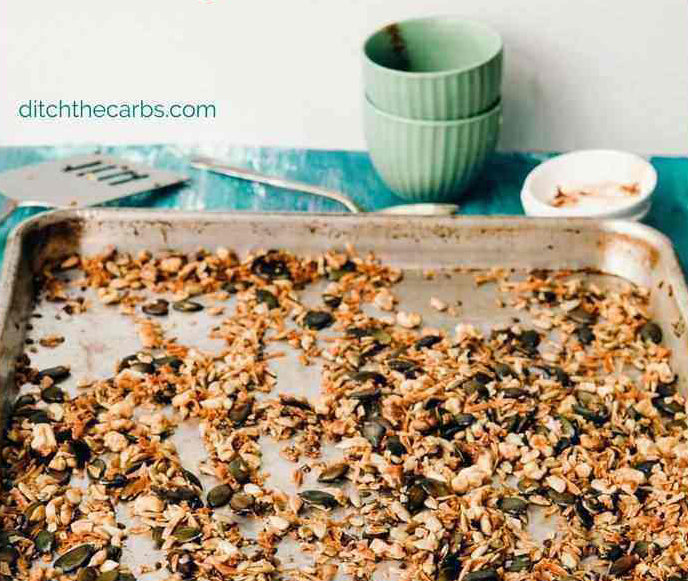
Image: Ditch the Carbs
Made with coconut flakes, flaxseeds, sunflower seeds, pumpkin seeds, walnuts, coconut oil, and a dash of ground cinnamon and ground ginger, this granola recipe will have you enjoying a low-carb, dairy-free, sugar-free, and grain-free breakfast in 30 minutes.
If you're adventurous, you can even go on to experiment with different flavors and spices. Think cacao powder, chocolate chips, orange zest, or even fennel and ginger.
Quick Grain-Free Hot Cereal
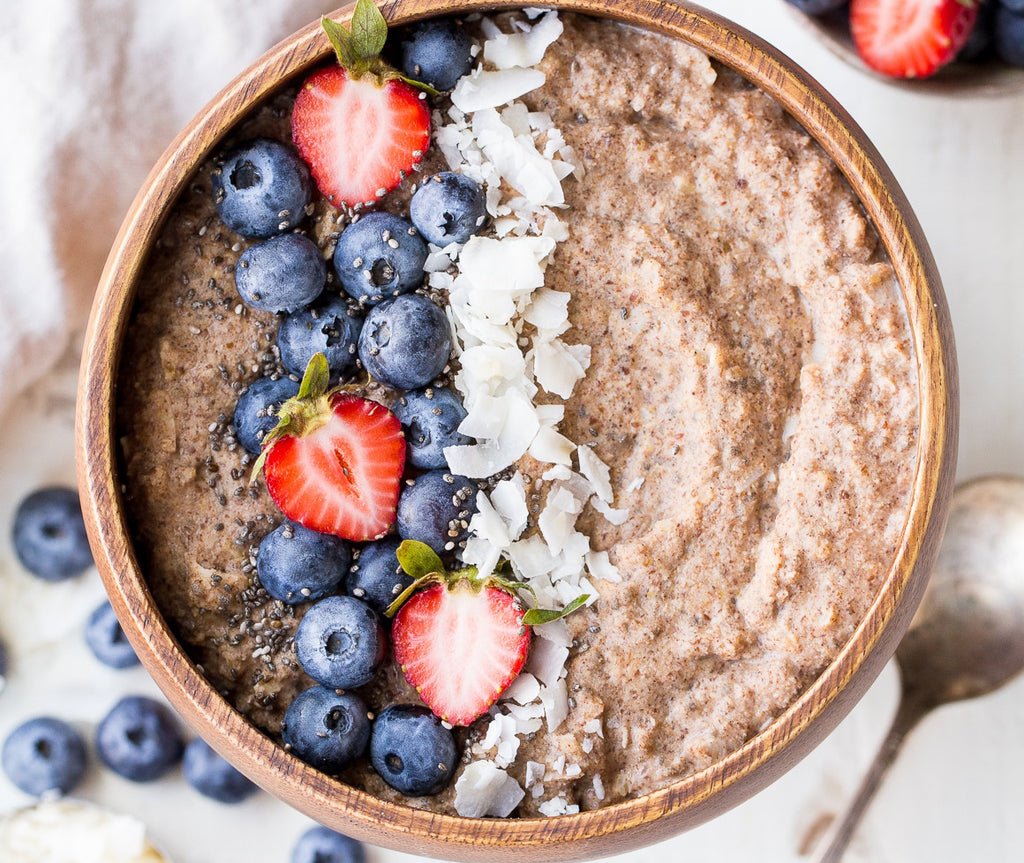
Image: Bakerita
Remember when we mentioned that oats can be a gluten-containing grain? Even so, it doesn't mean you're doomed to cold breakfast cereal every morning, as this hot cereal breakfast recipe proves.
This porridge-replacement takes just three minutes to make (how's that for a quick breakfast solution?), and is filled with wholesome chopped nuts (such as walnuts and pecans), unsweetened coconut flakes, flaxseed meal, coconut flour, chia seeds, vanilla bean powder or vanilla extract, and almond milk. As a sweetener, you can choose between date paste, maple syrup, or honey.
Cinnamon-Spice Crunch Cereal
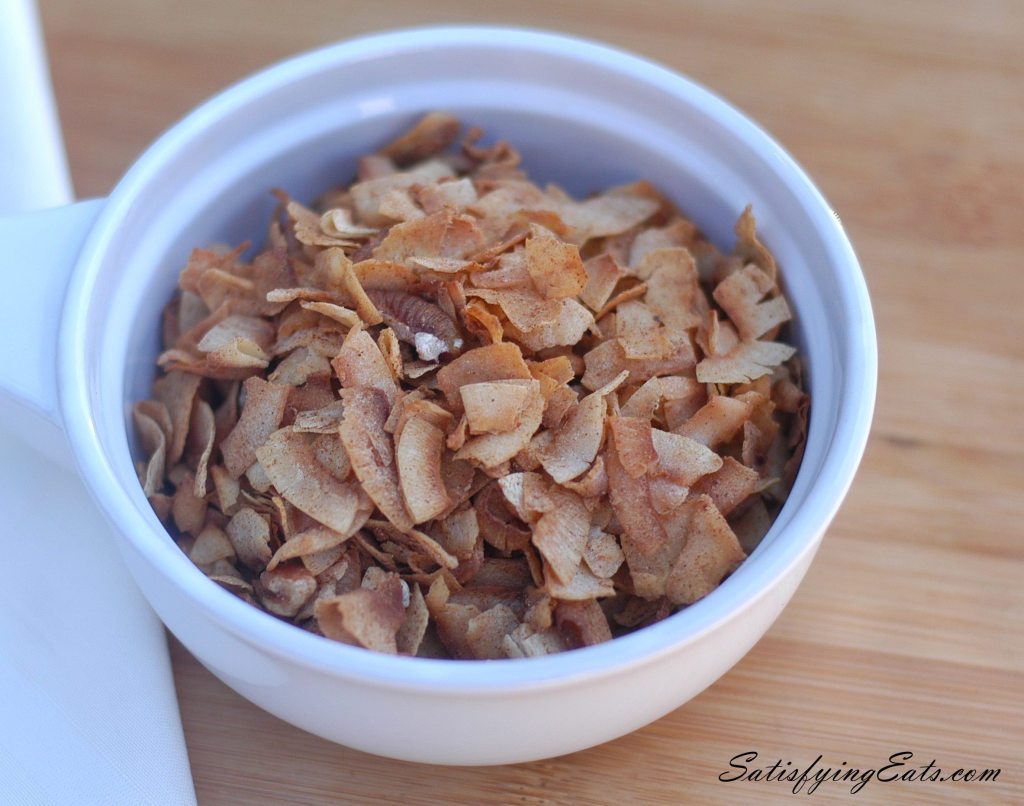
Image: Satisfying Eats
With a total of 2.5 net carbs per 1/2 cup serving, this cereal recipe gets all its crunchy goodness from the unsweetened coconut flakes (or coconut chips) and sliced or chopped nuts (such as almonds or pecans).
You can sweeten it with stevia, or for something more natural, you could add dried fruit or fresh blueberries, cranberries, or strawberries instead. Jazz it up by mixing in peanut butter or chocolate chips. Just be sure to store leftovers in an airtight container to retain its freshness.
Banana Nut Hemp Seed Cereal
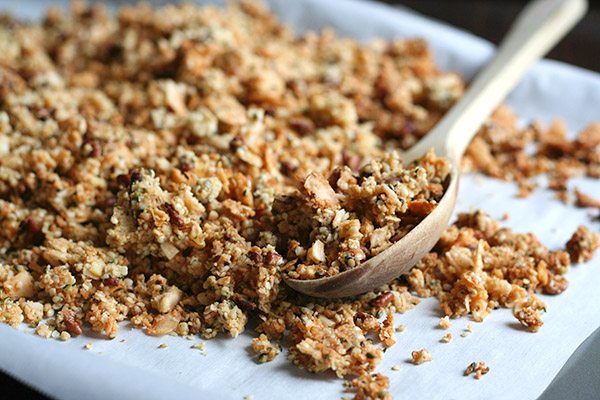
Image: All Day I Dream About Food
Hemp seeds are naturally low in carbs and high in fiber, with a rich nutrition profile that's high in antioxidants, fatty acids, minerals, and vitamins. It's also what gives this cereal recipe an extra crunch. Combine the hemp seeds with some almond flour, flaked coconut and chopped nuts (why not try cashews?), add a dash of banana extract and you'll have yourself a bowl of banana-flavored deliciousness.
Ready-to-Eat Grain-Free Cereal
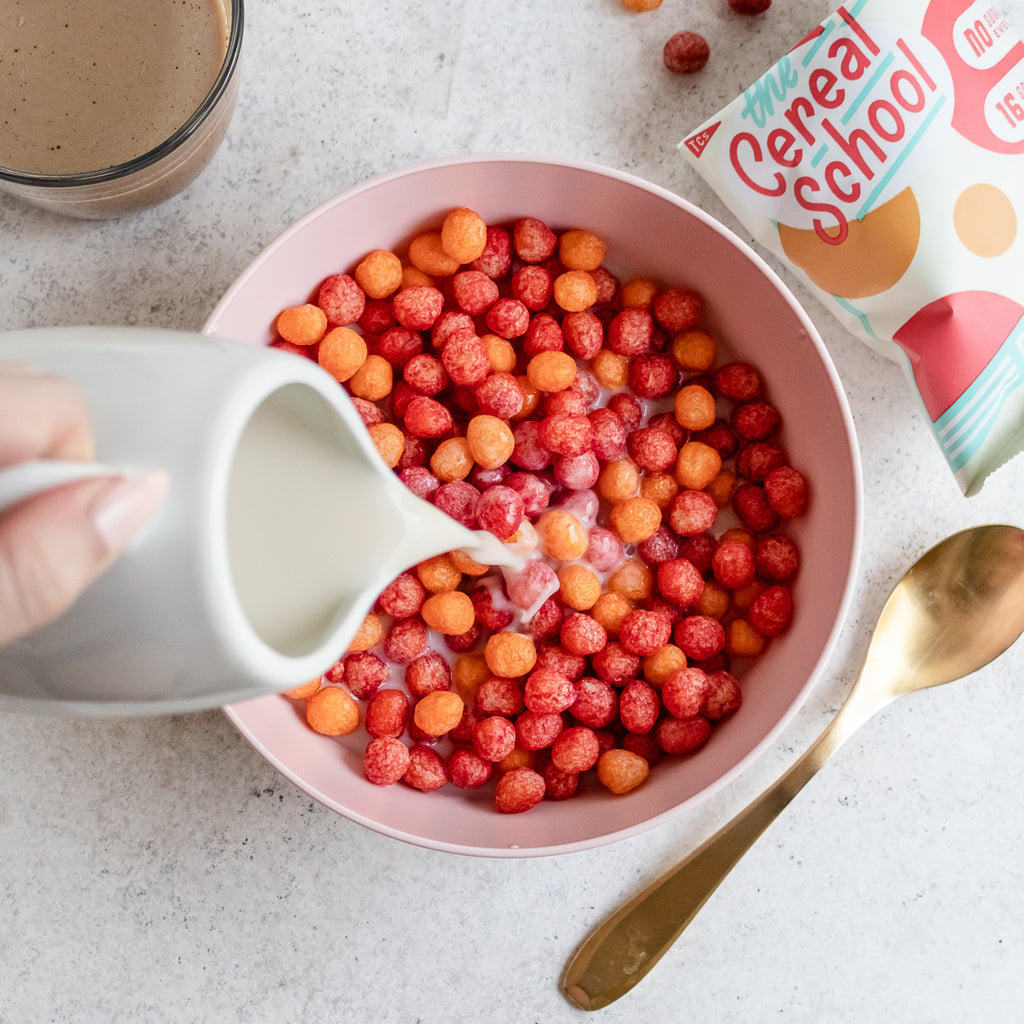
We get it. No matter how easy a recipe is, sometimes even an extra 15 minutes is too much to ask for. You don't want to think about cooking, much less remembering to preheat the oven to bake some coconut flakes.
That’s when a bowl of cereal is simply the most convenient option there is. Fortunately, you don’t have to compromise your health for the sake of convenience.
When you’re having one of those days, we've got your back. The Cereal School is not only 100% gluten-free and grain-free, but it contains absolutely no sugar or artificial sweeteners or colors. Yet it’s as perfectly sweet as you want it to be. (The secret? Monk fruit.)
And with one measly gram of carbs per serving, you don't even need to think about whether having a bowl of cereal might actually be good for your health — you know it is.



